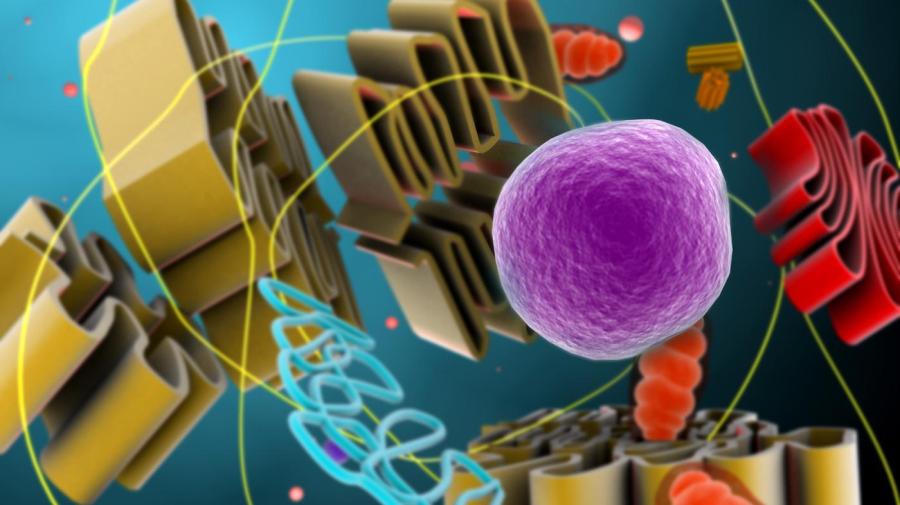What Is the Function of a Lysosome?

Lysosomes act as the garbage disposal or stomach of a cell, using enzymes to break down proteins, carbohydrates, nucleic acids and other wastes in the cell.
Lysosomes are membrane-bound organelles found in nearly all animal cells except for red blood cells. These structures are created by the cell itself with help from the Golgi apparatus and endoplasmic reticulum. They contain a variety of enzymes that help them break down waste particles found in the cell. They are found floating inside the cytoplasm, which is where they pick up most of the waste they consume. However, they do gather waste products from outside of the cell for digestion as well. The primary purpose of a lysosome is to break down large molecules and waste products, though it has a few secondary functions as well.
Formation of a Lysosome The enzyme proteins inside the lysosome are first created in the rough endoplasmic reticulum. The enzyme proteins are then packaged in a vesicle and transported to the Golgi apparatus. The Golgi apparatus does most of the work and creates the digestive enzymes. It then cuts off a small vesicle and fuses it with other acidic enzymes to create the lysosome. Lysosomes are released into the cytoplasm where they float freely until they are needed.
How Lysosomes Work Cells need to eat in order to get energy to do their work. The lysosome acts as the stomach and digests this food into usable components for the cell. Food comes into the cell and the lysosomes get to work. They attach to the material and release digestive enzymes to break down the larger particles into smaller usable molecules. Even if no food is available for the cell, lysosomes are at work. They will digest other organelles within the cell if they are not presented with other materials to consume.
Other Functions of a Lysosome Aside from digesting materials in the cell, lysosomes have other important jobs in maintaining the overall health of the cell. They help fight disease of the host cell in order to keep it healthy. They also work to repair the plasma membrane, which serves as a barrier for the cell from everything outside. Lysosomes also play a role in cell signaling, secretion and energy metabolism.
Appearance of Lysosomes Depending on the type of cell and the type of matter it needs to break down, lysosomes can vary greatly in size and shape. In most instances, lysosomes are small, spherical vacuoles. Large lysosomes are as much as 10 times the size of the smaller lysosomes, and can carry as many as 60 different enzymes.
“Suicide Bags” The membrane around the lysosome’s digestive enzymes protects the other organelles within the cell from damage. When there is a lack of food available, lysosomes will begin breaking down other organelles to use for energy for the rest of the cell. These small organelles are nicknamed “suicide bags” or “suicide sacs.” If a cell is nearing the end of its life or has become irreparably damaged, the lysosome will break open and destroy the cell. This removes the unhealthy cell and makes way for new, healthier cells to take its place.





